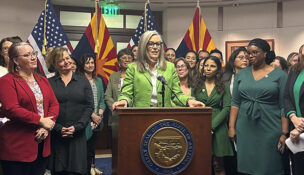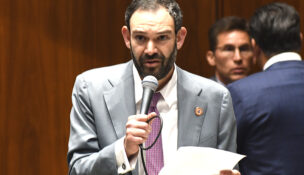U.S. Supreme Court considers San Pedro endangered species case
Arizona Capitol Reports Staff//April 20, 2007//[read_meter]
U.S. Supreme Court considers San Pedro endangered species case
Arizona Capitol Reports Staff//April 20, 2007//[read_meter]
Robin Silver, board chairman of Center for Biological Diversity, heard first-hand U.S Supreme Court oral arguments on a case affecting Arizona’s San Pedro River. The center, an Arizona environmental group,...
No tags for this post.

















